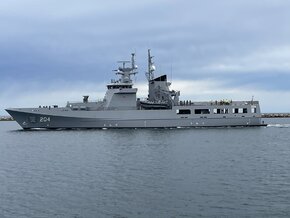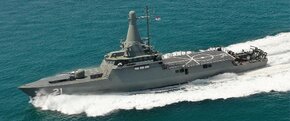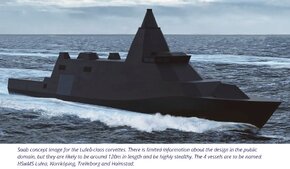With ranges of naval radars restricted by earths curvage ,naval ships attempt to have their sensory arrays a high as possible though too high may not track low flying incoming till late,with factors like stability of having masts so high on smaller ships is there an argument that ships like the Canberra class could have these larger arrays where stability is not such an issues providing an extended range for networking sensors with escorts?
Ideally, multiple assets in a TF would have a variety of sensors to provide a different types of detection capabilities, with the results then shared across the TF so that vessels (and aircraft) could have some form of common operating picture. One potential issue though is the capabilities and scope of the comms, datalinks and CMS used aboard some of the vessels. Looking at the
Huon-class MHC, IIRC they had a receive-only Link 11 datalink, which meant that if one of the MHC's had detected something, it did not have the ability to relay that to other vessels.
This is also one of the potential limitations on having smaller/cheaper vessels built to operate alongside MFU's in some sort of TF. One of the ways to keep vessels low cost would be to have minimal sensor, electronic, comms and CMS fitouts, as such kit can easily be quite expensive. OTOH, keeping such a fitout too minimal means that a vessel's ability to participate in a TF network would be minimal or non-existent.
As a practical matter, a TF would likely be better off if it was kitted and staffed in such a way that there was an orbiting surveillance aircraft constantly overhead providing some sort of overwatch capability. Whether this was a land-based fixed-wing MPA or AEW aircraft, organic AEW, air/sea search radar equipped UAV or a naval helicopter, something to provide a significantly higher and longer radar horizon, would likely make more of a difference than trying to up the number or power radars aboard the LHD's.



